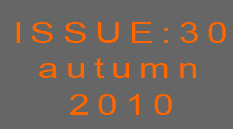

Call for papers
NESTet is designed to facilitate an exchange of information and the sharing of best practice. It is an important networking opportunity for better co-ordination and collaboration between different stakeholders in nuclear education.
The NESTet Programme Committee is calling for papers regarding the following topics:
-
What are the needs with regard to nuclear education and training? Feed-back is thought from industry (operators, providers, suppliers, ..), regulators, safety authorities and research institutions on skills and profiles required to ensure an efficiently and safely performing nuclear sector. This includes all levels from undergraduate to PdD and from young professional to top management.
-
What are the answers that help to close the gap? This is all about sharing best practice and examples of co-operation between different stakeholders and about training and education programmes that are able to cover needs.
-
Where are efforts on harmonisation needed? Harmonisation is part of effective strategies for nuclear education and training. A range of well-known initiatives have been launched especially on university level and many of them have been discussed at NESTet 2008. Other areas still need attention and should be presented at this edition of NESTet.
-
How to increase the motivation of people for a career in nuclear? How to attract young people to the nuclear sector? How to encourage skilled professionals with general engineering or project management competence to join the nuclear sector? What do stakeholders offer to different levels from undergraduate to PdD and how do they integrate education and training in a career path?
-
What is the situation with regard to infrastructure and tools for nuclear education and training? How can we overcome bottlenecks where the required infrastructure is not available in sufficient quantity and quality? How can collaboration, sharing of facilities and new emerging tools ensure the provision of the required infrastructure? What is the role and importance of experimental facilities? How can we use new technologies for education and training (e-learning, simulators, virtual engineering…)?
-
What role for international co-operation? The nuclear industry is operating worldwide; education is based on national systems. How can we ensure highly skilled staff in all countries operating nuclear facilities? How can we learn from each other and get the best out of all systems?
The NESTet Programme Committee welcomes both oral and poster submissions. If you wish to share knowledge and best practice in nuclear education and training in science, engineering and technology, please submit your abstract by 31 December 2010 through the NESTet Abstract Submission System.
Abstract review
The abstracts received will be peer reviewed under the auspices of the NESTet Programme Committee. Authors will be notified of paper acceptance by 31 January 2011.
Important dates
-
Deadline for abstract submission: 31. December 2010
-
Notification of authors: 31 January 2011
-
Deadline for full paper submission: 15 April 2011
-
Deadline for submission of PowerPoint presentations: 4 May 2011
-
Conference: 15 – 18 May 2011
Instructions for authors
Your full paper must be upload by 15 April 2011 at the very latest.
Your Powerpoint presentation must be in our possession by 4 May 2011 at the very latest.
 Download instructions for authors Download instructions for authors
Publication Policy
The proceedings NESTet 2011 will be published on the NESTet conference website, linked to the ENS website, with the reference number ISBN 978-92-95064-12-6
NESTet 2011 Delegates will receive a CD ROM with the proceedings of the conference about 6 weeks after the event.
Please don’t hesitate to contact the ENS / NESTet Secretariat should you have any question:
Tel: + 32 2 505 30 54
Fax: +32 2 502 3902
e-mail: nestet2011@euronuclear.org
www.nestet2011.org
|

